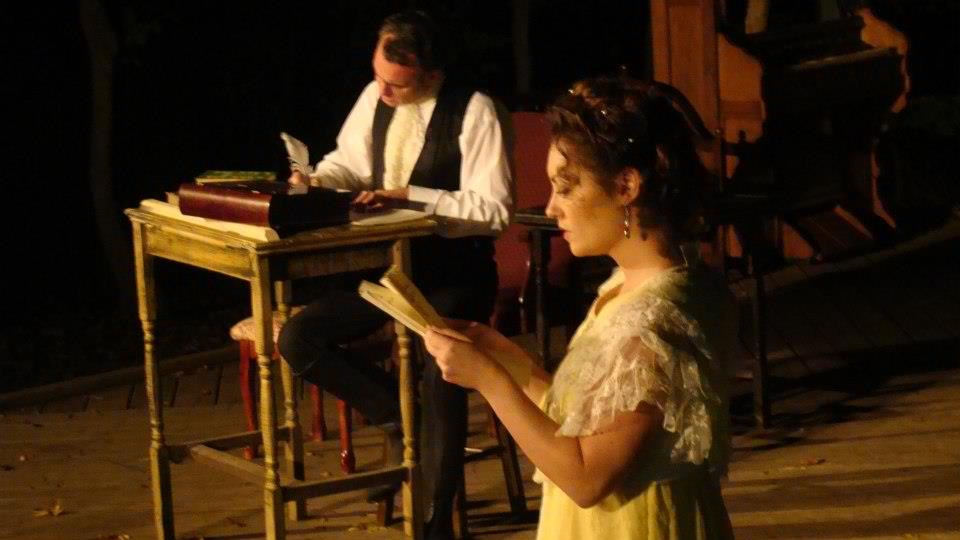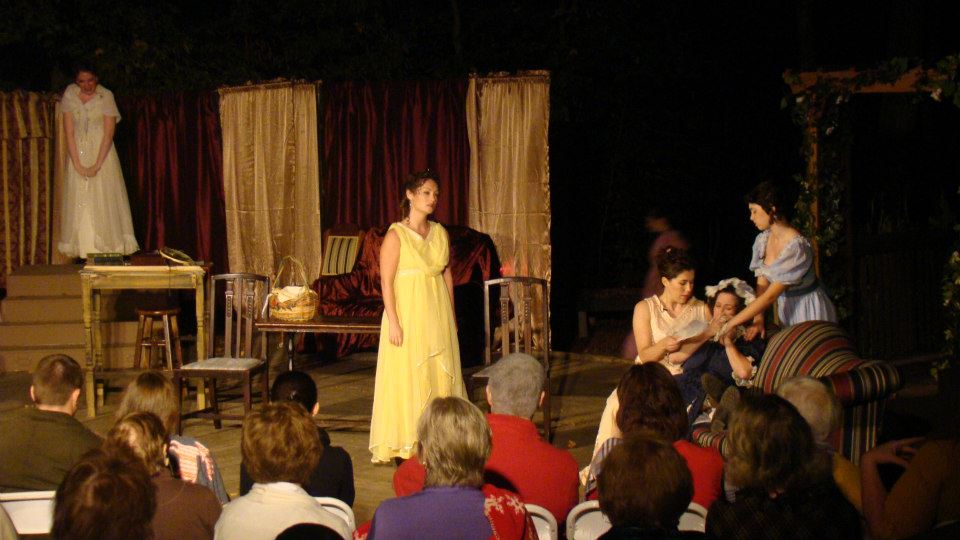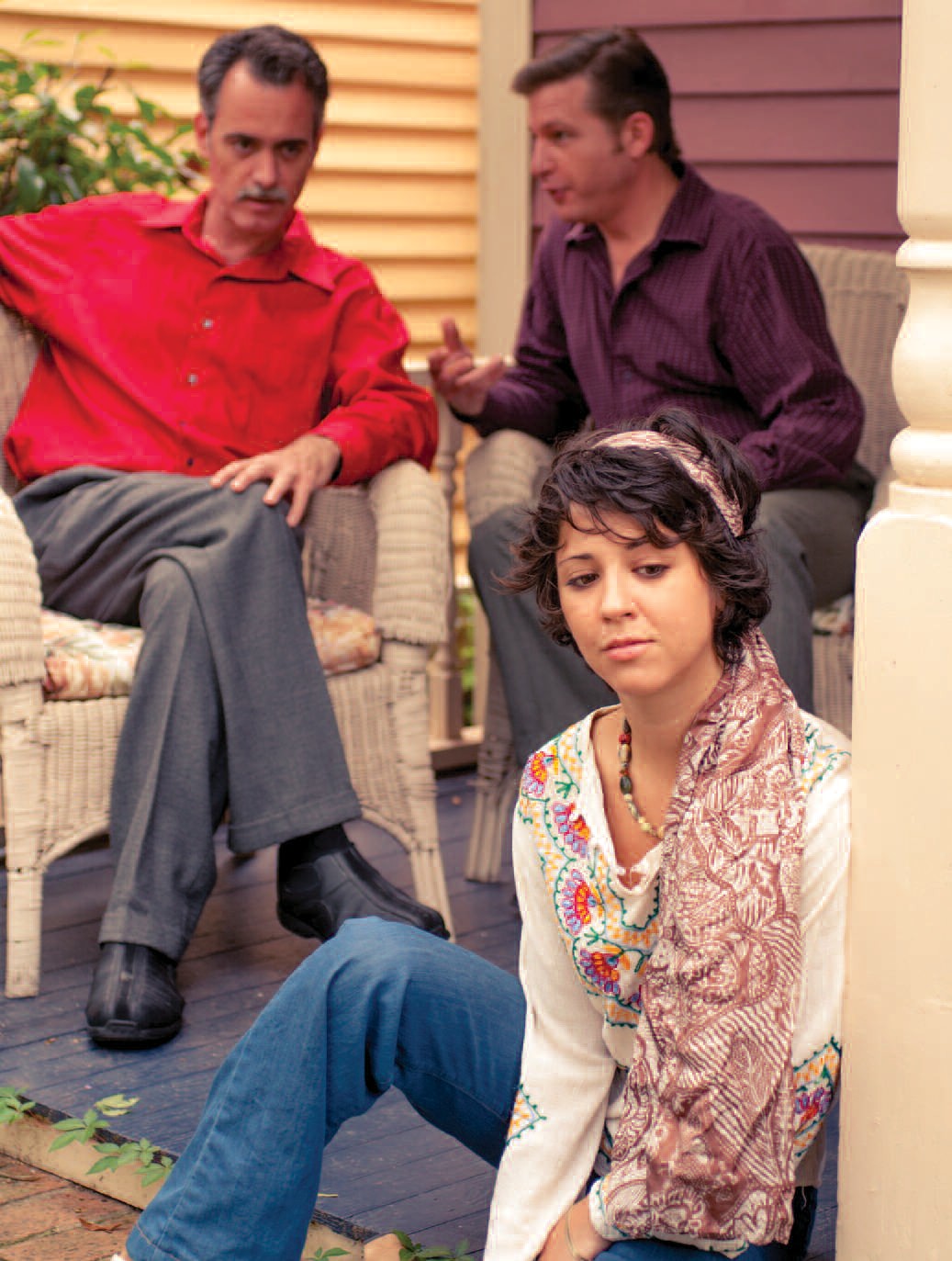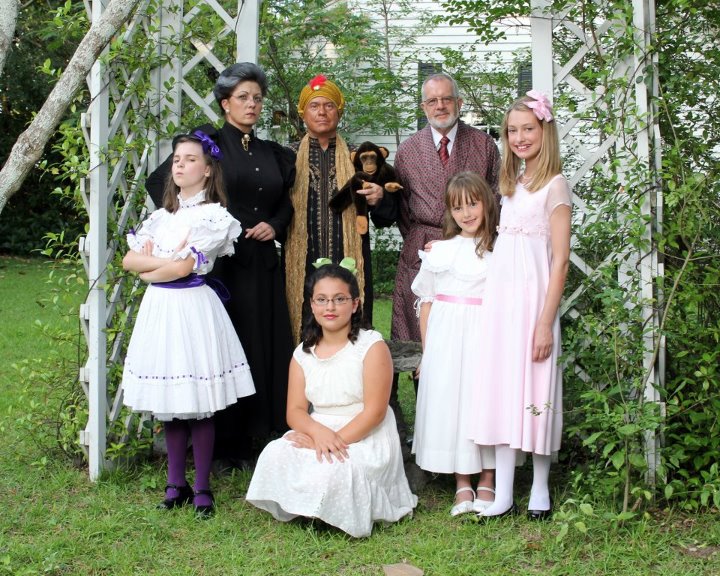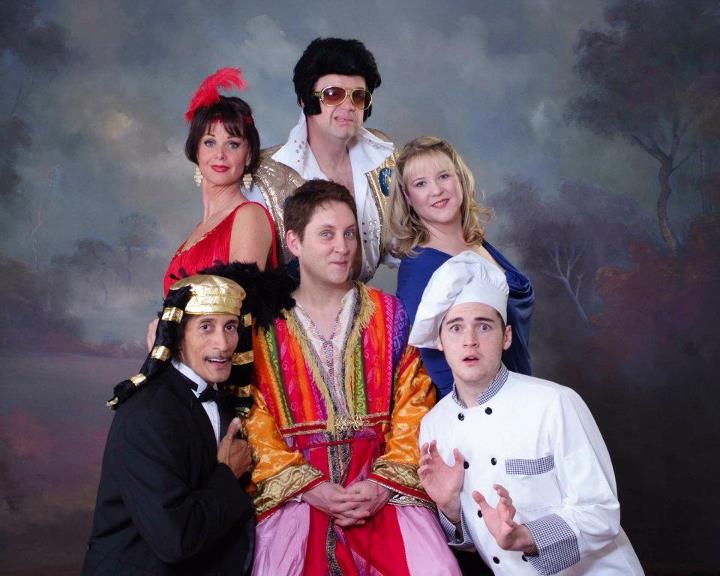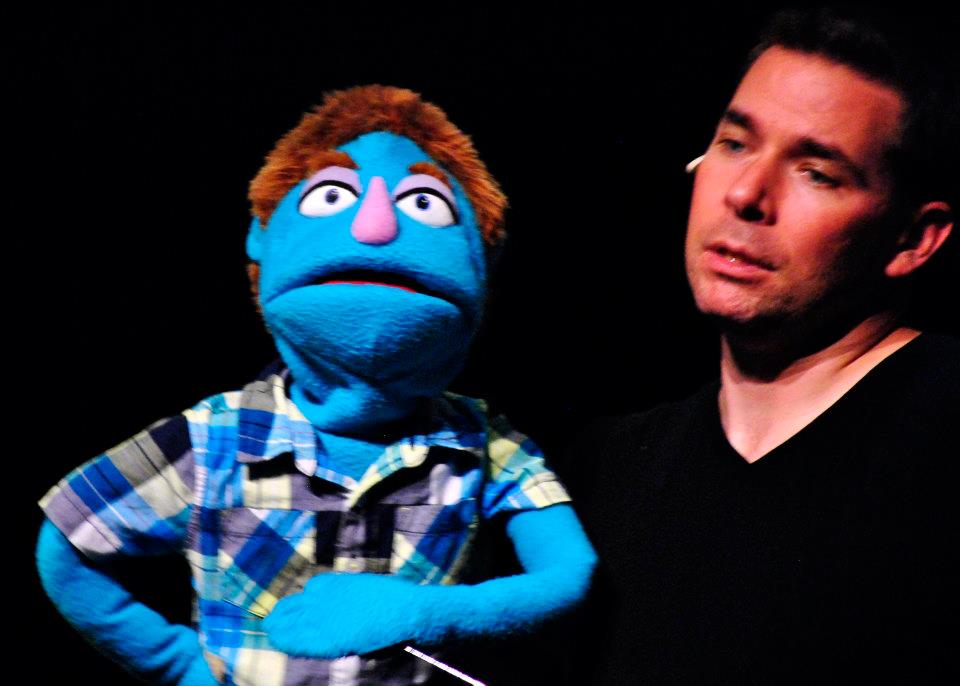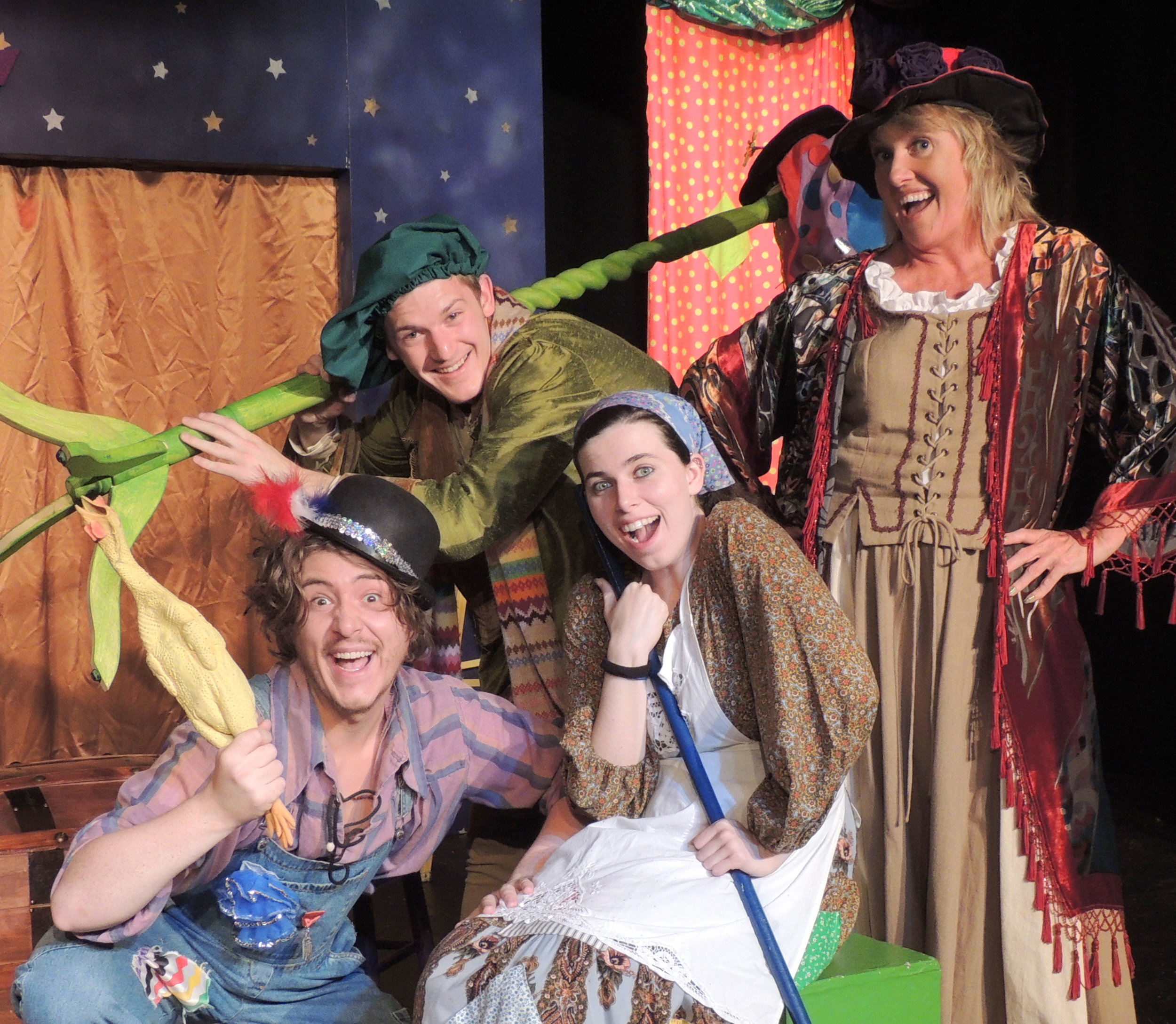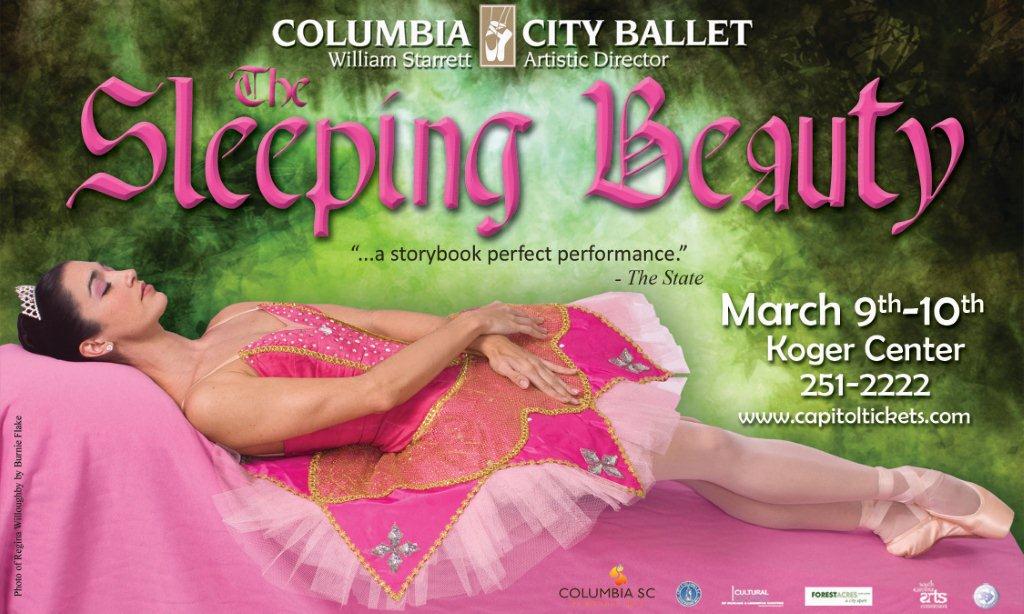When I began directing local live theatre five years ago, I intuitively knew where my strengths lay: helming casts of four to 12 players in boxed set productions, no matter whether they be comedies or dramas. After all, those were the types of shows I most enjoyed being in – plays that allowed even a supporting actor to actually have time to develop a character and present it without being interrupted by a sudden song or choreographed routine involving almost everyone else in the cast.
Don’t get me wrong. I enjoy musicals when they are well done, and in Columbia, now that we’ve reached a point when many who populate them have had the luxury of singing and dancing lessons, many such productions are actually quite good. For my part, in my 20s, when I lived in Newberry, SC, I so much wanted to be a part of musicals that I secretly studied with a retired voice professor who had been something of a legend during his days on the faculty of Newberry College. After a year, he had whipped me into good enough shape to score the lead in a production of Man of La Mancha. In the years since, I’ve had the opportunity to play and sing roles ranging from Cinderella’s Prince in Into the Woods and Scrooge to Professor Bhaer in Little Women: the Musical and perhaps the role for which I was best suited, Captain Hook in Peter Pan.
Nevertheless, that quarter century of performing in musicals taught me some things I knew I would not want to deal with as a director. First of all, you don’t really control the complete vision of the story you’re telling. You share it with a musical director and a choreographer. And the older I get, the more I find I want to tell the entire story myself, thank you very much. You also share casting decisions. I knew I’d never want to be in the position of casting an inadequate actress because she happened to be a superb singer, or not being able to cast a superior actress who happened to have two left feet.
Musicals are also logistically complex. No lights up and lights down on two acts with perhaps a maximum of two scenes per act. Instead, many lighting and set changes that must be coordinated with music and large numbers of bodies entering and exiting the stage. I feel a brain cramp coming on just thinking about it.
And finally, after having been in a fair number of musicals, I knew the kinds of egos they often attract, often some of the most “special” among those of us who enjoy stagecraft, many of whom have set up housekeeping at the very center of the Universe. Did I really want to deal with nursing egos to ensure the actors attached to them would give the performance they should? Could I ever develop the diplomacy such action might require?
I really didn’t know.
Nevertheless, my first directing job was Chapin Theatre Company’s A Murder Is Announced, an Agatha Christie mystery. They took a chance on me as a new director and I did everything I knew how to make sure my efforts – and the show itself – would succeed. I broke the script into French scenes, organized a rehearsal schedule that prevented actors from waiting in the wings for their scenes to begin, assembled a strong cast (with a few people playing against type), and staged a show that was well received by the theatre’s patron base. I did find myself massaging an ego or two, but nothing that compared to what I had experienced by being in musicals.
I directed a second show for Chapin, and in short order, one for Workshop, ultimately also being offered a directing opportunity at Village Square in Lexington. In a few short years, I had directed eight productions with varying degrees of success, but among all of them, there was nary a musical.
Until Dr. Jekyll and Mr. Hyde.
Let me be clear, the production of Dr. Jekyll and Mr. Hyde Chapin Theatre Company is staging at the Harbison Theatre at Midlands Technical College is not a musical. When it was announced as part of the current season, many in the community confused it with Jekyll & Hyde, the actual musical by Frank Wildhorn, Leslie Bricusse and Steve Cudin. It’s not that show.
This Dr. Jekyll and Mr. Hyde is a non-musical play adapted by Jeffrey Hatcher from the novella Strange Case of Dr. Jekyll and Mr. Hyde by Robert Louis Stevenson. It was commissioned by the Arizona State Theatre in 2008 and has since become fairly popular among local theatres throughout the country.

It’s easy to see why. The show retains the essential elements of the Stevenson story, but introduces a modern sensibility in that there are four incarnations of Mr. Hyde (one of whom is a very sexy woman) and treats Dr. Jekyll’s metamorphosis into the various Hydes as something of a personality disorder triggered by experimentation with drugs. It is also economical to produce, in that there is no fixed set and uses one rolling door and a few pieces of furniture to define spaces. And, it employs only eight actors, some of whom play up to five or six distinct characters, each, with no significant costume changes.
On paper, the show looks simple. It’s just a black box staging and reinterpretation of a classic horror tale, right?
Ah, but just as Dr. Jekyll morphs into Mr. Hyde, this production began showing signs of trying to transform itself into a sort of musical in its own right.
First, it is structured so that the rolling door moves from scene to scene to define space as the characters move from London streets to Jekyll’s home to a London medical college to a slum room where Hyde lives to a police morgue to a local park and back again. Quick scene changes that must be executed flawlessly so that music and lighting match and actors don’t stumble over themselves getting to where they need to be, with the correct props in hand at the right moments – that sounds an awfully lot like a musical to me. I found as I pre-blocked the show (it is my habit to work out blocking in my head, writing it down in the script, before the first rehearsal with actors) that I had to view this show as if it were a musical. The play has a shifting foundation and its own fuzzy logic as one scene melts into another and an actor who was one character in the first scene becomes someone entirely different in the next. I know I’ve seen musicals that operated on a similar premise.
Enthusiasm about this project began to build as soon as it was announced and I subsequently learned that J.S. Lee, who was already on board as the sound designer, is also a composer. He expressed interest in creating an original ambient score for the production. He let me hear a sample of his work and I immediately saw an opportunity to make this production even more special by enhancing its scenes with original music.
In addition, the lighting designer was eager to develop an atmospheric lighting plot that would give the story the dark moods it requires while still enhancing the actors’ work on stage. Lighting is one area of stagecraft in which my knowledge is limited, and during discussions with lighting designer Matt Pound, I found my contributions to be limited to utterances such as, “Make the cyc glow red here,” or, “Make this look really dark and creepy.”
Finally, we decided to take advantage of some of the unique technical capabilities of the Harbison Theatre, which is only two years old. It can actually be used as a movie theatre due to its retractable screen mounted near the proscenium. We decided to create a video opening credits sequence that will be accompanied by an “overture” composed by J.S. Lee.
As I look at the elements we’ve added to what arguably could have been a very simple show, I see that about the only thing keeping it from being a true musical is song lyrics and choreography for the actors. Otherwise, compared to other shows I’ve directed, it’s evolved into a technical beast requiring a degree of conceptual thinking from me that, at times, has threatened to wrap my brain around a fence post.
Still, I would not trade the experience. As I write this, we are a few days from our first technical rehearsal and a few more days further from our opening night. We have yet to add the music and lighting, along with the video opening sequence, that we’ve spent the past six months developing and I have no idea how well the parts will assemble into a whole. Yet, I have faith it will be impressive.
What I do know is that the actors are ready. This project attracted some of the Midlands’ most talented, if sometimes underrated, performers. David Reed and Nathan Dawson are masters of accent and character shifts; George Dinsmore moves far beyond the physical comedy for which he is known as he offers a portrait of a good, but haunted man who fears he is losing his grip on reality. Kathy Sykes makes her female version of Mr. Hyde a true vamp and Emily Meadows brings a gentle, realistic energy to her role of the chambermaid who falls for the ultimate bad boy, Edward Hyde. Jeff Sigley has grown significantly as he brings to life the paternal attorney who tries to help Jekyll as his world falls apart and Teresa McWilliams and Dennis Kacsur support the main cast as they engender a number of small supporting roles. And nowhere among them is an out-of-control ego residing at the center of the universe.

No, Chapin Theatre Company’s production of Dr. Jekyll and Mr. Hyde is not a musical, but in several key ways, it does feel like one. Nevertheless, it has shown me that I might have to “unswear” that I’ll never direct a genuine musical.
Glenn Farr has acted, sung and even danced on Midlands stages for nearly 40 years. In the past five years he has directed for Chapin Theatre Company, Workshop Theatre and Village Square Theatre in Lexington.
Dr. Jekyll and Mr. Hyde, adapted by Jeffrey Hatcher from the Robert Louis Stevenson novella Strange Case of Dr. Jekyll and Mr. Hyde, runs Oct. 19-Nov. 3, 2012 at the Harbison Theatre at Midlands Technical College, 7300 College St., Irmo, SC 29063. Visit www.chapintheatre.org for information on specific performance dates and reservations.


